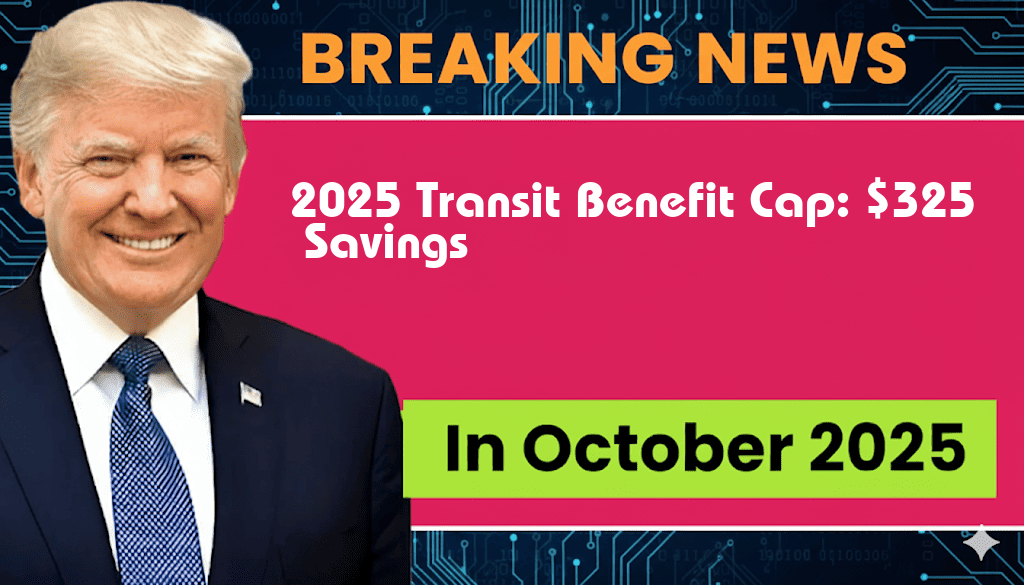The Internal Revenue Service (IRS) has announced that the transit benefit cap for 2025 will be set at $325 per month. This significant increase from previous years is designed to encourage the use of public transportation and alleviate some of the financial burdens associated with commuting. The new cap reflects a growing recognition of the importance of sustainable transit options, particularly as urban congestion and environmental concerns continue to rise. For employees who utilize pre-tax transit benefits, this adjustment could lead to substantial savings, enhancing the appeal of commuting via bus, train, or other public transit systems. With many organizations looking to support their workforce through flexible benefits, understanding how to maximize these savings is essential for both employers and employees alike.
Understanding Transit Benefits
Transit benefits allow employees to use pre-tax dollars to pay for commuting costs, which can significantly reduce taxable income. This program is particularly beneficial for those who rely on public transportation to get to work. The IRS adjusts the cap annually to reflect changes in the cost of living and the transportation landscape.
What’s New for 2025?
The adjustment to the 2025 transit benefit cap is part of a broader trend towards enhancing public transit incentives. Here are some key details about the new cap:
- Monthly Cap: $325
- Previous Year’s Cap: $300
- Effective Date: January 1, 2025
This increase allows employees to set aside more pre-tax income for their commuting expenses, translating into greater savings throughout the year.
Potential Monthly Savings
To illustrate the financial impact of the new cap, consider the following example for a commuter using public transportation:
| Expense Category | Pre-2025 Cap | 2025 Cap | Annual Savings |
|---|---|---|---|
| Commuting Costs | $300 | $325 | $300 |
| Tax Savings (Assuming 25% Tax Rate) | $75 | $81.25 | $75 |
In this scenario, the increase in the cap not only allows for higher contributions but also provides an opportunity for greater tax savings, making public transit a more attractive option for employees.
Benefits of Using Transit Benefits
Utilizing transit benefits can lead to various advantages:
- Financial Savings: Employees save on taxes and commuting costs.
- Convenience: Many transit options offer direct routes, reducing travel time.
- Environmental Impact: Public transit reduces the number of personal vehicles on the road, contributing to lower emissions.
How Employers Can Support Transit Benefit Programs
Employers can play a pivotal role in facilitating transit benefits for their employees. Here are several strategies:
- Offer a flexible benefits package that includes transit options.
- Educate employees about the available transit benefits and how to enroll.
- Partner with local transit authorities to provide discounts or additional incentives.
Looking Ahead
As urban areas continue to evolve, the demand for efficient and sustainable transportation solutions will only grow. The 2025 increase in the transit benefit cap is a proactive step towards encouraging more individuals to consider public transportation. For more information on transit benefits and IRS guidelines, visit the IRS website or refer to resources from Forbes.
By understanding and leveraging these benefits, both employers and employees can contribute to a more sustainable future while enjoying significant financial savings.
Frequently Asked Questions
What is the new Transit Benefit Cap for 2025?
The Transit Benefit Cap for 2025 has been set at $325 per month, allowing commuters to save on their transportation expenses.
How can I take advantage of the Transit Benefit program?
To take advantage of the Transit Benefit program, employees can enroll through their employer, who will provide details on how to allocate pre-tax income towards eligible transit costs.
What types of transit expenses are covered by the benefit?
The transit expenses covered by the benefit include costs for public transportation such as buses, trains, and subways, as well as commuting expenses like vanpools.
Will the Transit Benefit Cap affect my taxable income?
Yes, utilizing the Transit Benefit Cap can reduce your taxable income, as the funds allocated for transit expenses are deducted from your pre-tax earnings.
Are there any changes to the Transit Benefit program compared to previous years?
Yes, the Transit Benefit program has seen an increase in the monthly cap, moving from previous years’ limits to the new $325 for 2025, which enhances potential savings for commuters.

Leave a Reply